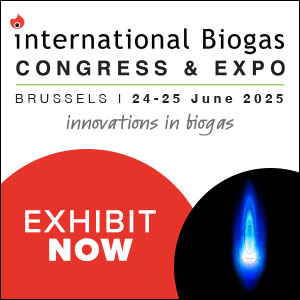Northumbrian Water invests £9.5m in gas-to-grid plant
The firm’s new plant at Bran Sands Regional Effluent Treatment Works in Teesside will significantly reduce the site’s running costs and see enough biomethane to fuel 5,000 homes injected back into the National Grid.
Bran Sands is the second Northumbrian Water site to use gas-to-grid, following the establishment of a similar plant at Howdon on North Tyneside in 2015. The major investment represents the latest part of the firm’s energy management plan, through which it continues to use increasing volumes of sustainable energy from a wide range of sources.
Northumbrian Water said it will see returns of almost £3 million (€3.3 million) annually, as a result of saving on energy bills and returns from a two-tier renewable heat incentive agreement, as well as delivering environmental benefits. The firm already uses 100% of its sewage sludge to generate energy using anaerobic digestion operations at Bran Sands and Howdon, and the Teesside site generates solar power on its rooftops.
Richard Murray, Northumbrian Water’s head of wastewater treatment and bioresources, said: “The gas-to-grid plant at Bran Sands is the latest part of our work to expand upon a wide-ranging sustainable energy mix that not only delivers value for money for our customers by reducing costs but also contributes to our goal of achieving operational carbon neutrality by 2027.
“Bran Sands is a site that, at its heart, is there to protect the environment. The gas that is now flowing through the new plant represents the result of four years of planning and work to establish the gas-to-grid plant and add an extra layer of sustainability to the way we treat sewage and industrial effluent from across Teesside.”
“Northumbrian Water has a long history of using sustainable power at its site in Tees Valley,” added Julie Gilhespie, chief executive of the Tees Valley Combined Authority Group, which includes the South Tees Development Corporation. “This latest £9.5 million (€10.4 million) investment in innovative technology takes this commitment even further.
“Our aspirations for the development corporation site are heavily focused on becoming a leading site for clean growth and the circular economy, with an aim to play host to the first decarbonised industrial cluster by 2030 with the Net Zero Teesside project. This is another example of how businesses in the region share our clean energy goals.”
Swedish specialists Malmberg installed the equipment, the same firm that delivered the sister plant at Howdon.

























